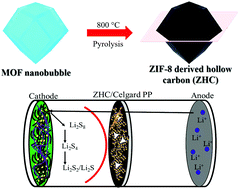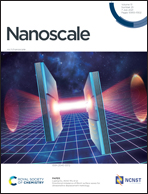ZIF-8 derived hollow carbon to trap polysulfides for high performance lithium–sulfur batteries†
Abstract
Lithium–sulfur batteries (LSBs) have a high theoretical energy density and are low cost. However, the undesirable shuttle effect with the solid discharge product, Li2S, greatly impedes their market penetration. Conductive carbon materials with functional elements are beneficial in controlling the shuttle effect and can reactivate the Li2S, leading to improved long term cycling performance of LSBs. Herein, we report zinc (Zn) and nitrogen (N) co-doped ZIF-8 derived hollow carbon (ZHC) as a promising separator coating for LSBs to control the shuttle effect. The hollow area in the ZHC is identified to be around 250 nm with a carbonized outer surface thickness of approximately 50 nm. The presence of Zn and N in the nanohollow carbon structure helps to mitigate polysulfide (PS) diffusion in LSBs. Furthermore, the hollow interior of the carbon acts as a PS pocket to physically capture the PS and in addition Zn and N chemically attract the PS through polar–polar and metal sulfide interactions. The ZHC with its unique architecture and functional groups shows a promising performance with an initial specific capacity (S.cap) of 842 mA h g−1 at 4.80 mg cm−2 and cycling stability until 400 cycles, which is considerably higher in comparison with the cycling performance of parent ZIF-8.

- This article is part of the themed collections: Nanoscale Horizons and Nanoscale: Nanomaterials for Energy, Celebrating International Women’s Day: Women in Nanoscience, Nanoscale 2022 Lunar New Year Collection, Nanoscale Most Popular 2021 Articles and 2021 Nanoscale HOT Article Collection


 Please wait while we load your content...
Please wait while we load your content...